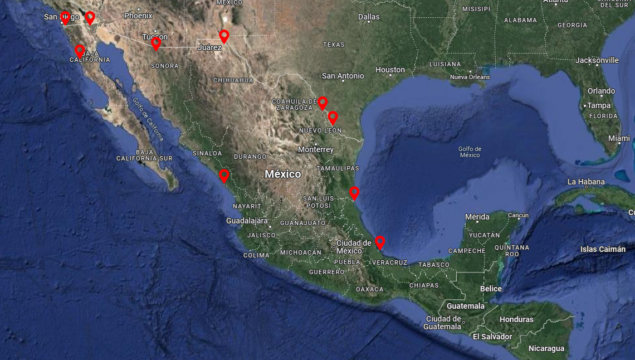Mexican Customs Entry Types Explained: What Importers Should File and When
If you’re moving goods into Mexico, understanding the right type of customs entry—known as “tipo de pedimento”—is key to compliance and cost efficiency. Each type of entry serves a specific business purpose, and filing the wrong one can delay your cargo or trigger penalties. In this article, we break down the most common customs entries and when you should use them.

1. Definitive Importation (Importación Definitiva)
This is the most common type of entry used when goods are intended to remain in Mexico indefinitely. It applies to most commercial imports where the buyer in Mexico takes ownership, and duties and taxes are paid upfront.
Use it when: You’re selling goods to a Mexican buyer or planning to distribute them within the country.
2. Temporary Importation (Importación Temporal)
Used when goods are entering Mexico for a specific purpose and time frame, and will eventually leave the country. Common in maquiladora operations or trade shows.
Use it when: You’re importing machinery or raw materials for manufacturing and later exporting finished products.
3. Virtual Entry (Pedimento Virtual)
This type of customs entry allows two parties in Mexico to “virtually” import/export goods for accounting and compliance purposes without physically moving them through customs again.
Use it when: You’re transferring goods between IMMEX companies or from bonded warehouses.
4. Return of Temporarily Imported Goods (Retorno de Mercancías)
Filed when you need to return temporarily imported goods to their country of origin. This avoids penalties for overstaying temporary import timelines.
Use it when: You’re done with the equipment, or a trade show ends, and you’re shipping everything back.
5. Transfer Entry (Cambio de Régimen)
This applies when goods imported temporarily are converted into definitive imports or are moved into a different customs program.
Use it when: You decide to keep the goods in Mexico permanently after a temporary importation.
Why Filing the Right Entry Matters
- Incorrect filings can lead to double taxation or legal issues.
- They impact your inventory control and audit trail.
- Entry type determines the documents and tariffs applicable.
How Novic Logistics Can Help
At Novic Logistics, our team works closely with certified Aduanal Agents and legal compliance officers to determine the correct entry type for each shipment. Whether you’re importing electronics, raw materials, or finished goods, we ensure all your documentation aligns with Mexican customs regulations.
We also assist with IMMEX programs, fiscal compliance, and bonded warehousing—helping you streamline operations and avoid costly mistakes.
Conclusion
Understanding Mexico’s customs entry types is a crucial step for importers doing business across the U.S.-Mexico border. With the right strategy and expert support from Novic Logistics, you can minimize risk, avoid delays, and keep your supply chain moving.
